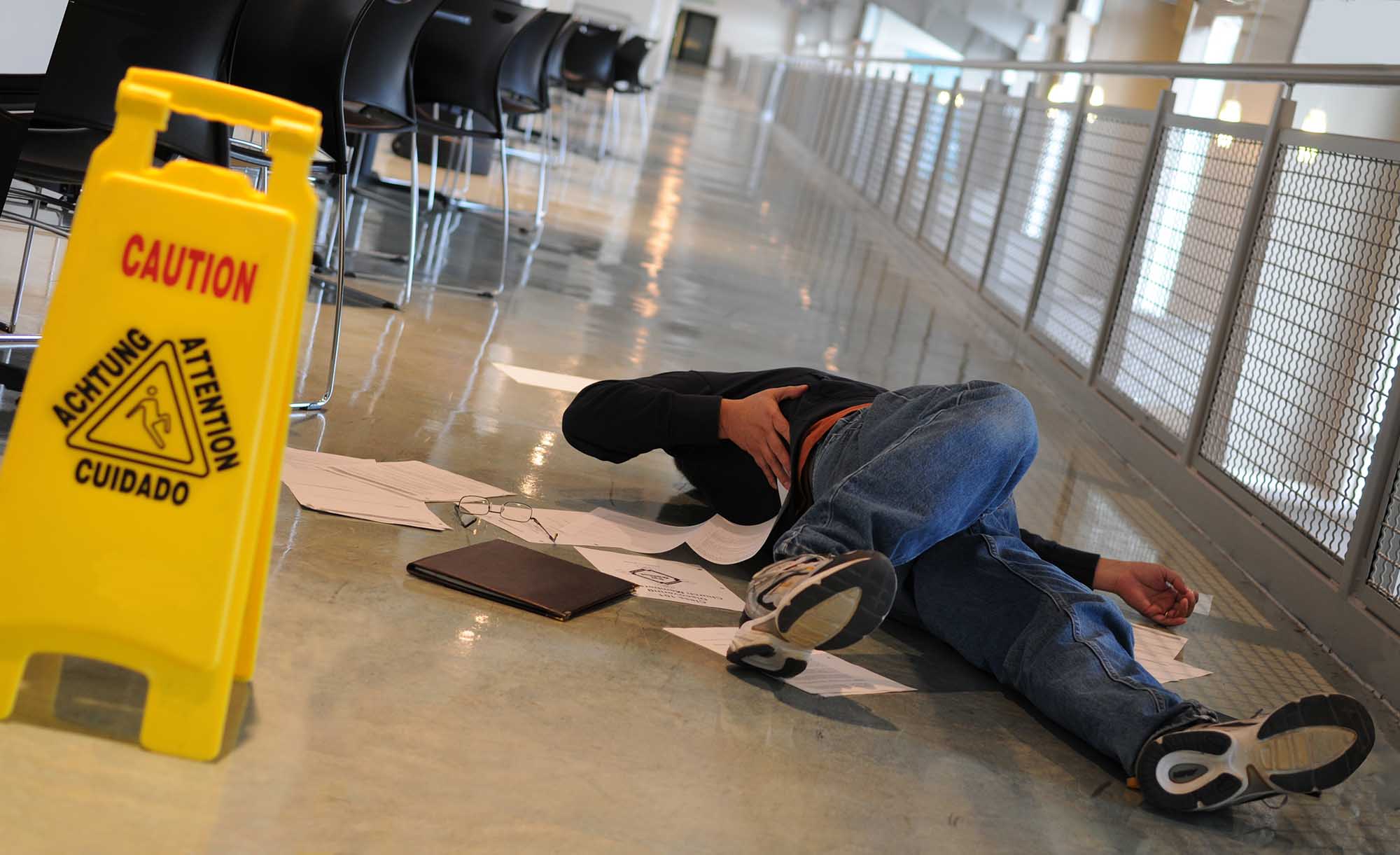Slip/Trip & Fall Accidents
On This Page

Slip/Trip & Fall Accidents
If you were in a public place or a private residence and hurt yourself due to a slip and fall, you may be eligible to file a slip & fall lawsuit. A slip & fall is an injury which occurs when someone slips, trips or falls as a result of a dangerous or hazardous condition through the negligence of a property owner. Each case turns on whether the property owner acted carefully so that slipping or tripping was not likely to happen, and whether you were careless in not seeing or avoiding the condition that caused your fall.
When an individual slips & falls on someone else’s property and is injured as a result of a dangerous condition on the property, the land owner or business proprietor may find himself legally responsible and may be liable for the injuries.
Property owners are responsible for injuries that occur as a result of a dangerous or hazardous condition on their property, which the owner knew about, or should have known about.
A victim would have to prove the following in order to hold the property owner responsible and have a premises liability case:
That the property owner caused the unsafe condition and the subsequent slip and fall accident (by spilling something and not cleaning it up, by digging a hard-to-spot hole in a heavily trafficked area, etc.)
That the property owner knew about the condition but did not try to correct it (by not posting a sign on uneven ground, etc.)
That the property owner should have known about the danger, because a “reasonable” person would have found the problem and taken steps to prevent injuries caused by the slip and fall accident (This is the most common situation, as it is not clearly defined and is determined based on common sense).
Dangerous Or Hazardous Condition Defined
Dangerous & hazardous conditions may cause slips and falls due to accumulation of water, ice or snow, liquids, as well as abrupt changes in flooring, raised or cracked sidewalks, poor lighting, or a hidden hazard, such as a hidden ground hole.
A dangerous or hazardous condition may be apparent such as a broken step or railing in a staircase, or it may be hidden such as ground hole that is overgrown with grass.
A dangerous and hazardous condition may be permanent such as a 2 inch raised area of a sidewalk creating a change in elevation, or it may be a temporary spill of liquid in the aisle of a grocery store.
A dangerous and hazardous condition may even appear to be something normal but be in reality is a slippery situation.
Slip & Fall Example
The owner or manager of property can be liable to somebody injured on their property, but not under all circumstances. The owner or the manager of the property has to be negligent in the conduct of caring for or managing their property.
For example: Someone could fall down because a light burned out in a staircase; however, if the light had burned out just before the person got to that staircase and the person fell down, in this situation, the property owner or manager probably would not be liable because the owner or manager of the property did not cause the defect in the property, and the defect did not last long enough for the owner or manager of the property to know about the defect and fix it.
Property Owner’s Knowledge of a Dangerous or Hazardous Condition
In general, a property owner will be considered to have knowledge of a dangerous or hazardous condition if it is permanent in nature. When a dangerous or hazardous condition is permanent in nature, the owner would have known, or should have known, about the condition before the slip and fall accident occurs.
For example: If wet algae has accumulated on the sidewalk over a period of time due to leaking lawn sprinklers, it would have to be proved that the person responsible knew about, or should have known about the condition as it had been occurring over a period of time. An expert witness would be required to prove that algae overtime accumulates to this degree when water is leaking as in this situation.
The value of a slip and fall depends on the particular facts of your particular case such as the location, the total amount of insurance coverage, the wealth of the defendant, the severity of the injury, the strength of the case, and the assets and insurance of anyone else in any way at least partially responsible, plus the skill of the lawyer involved. Depending on the jurisdiction and the facts of your particular case, generally, the following damages may be recoverable:
Medical bills and expenses incurred as a result of the incident
Lost income for time from work
Recovery of the fair value of any clothing damaged in the incident
Compensation for pain and suffering as a result of the incident
General damages
